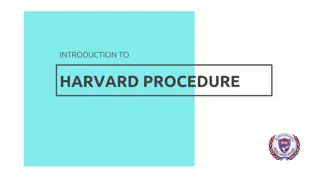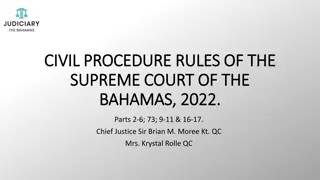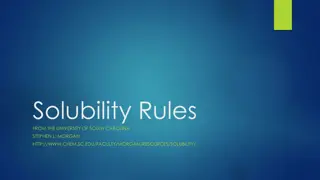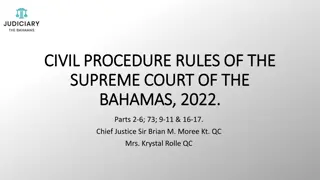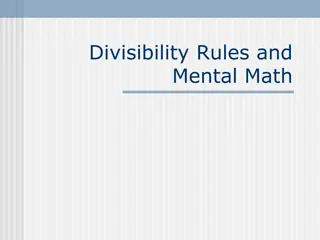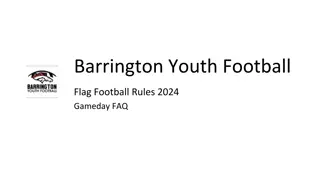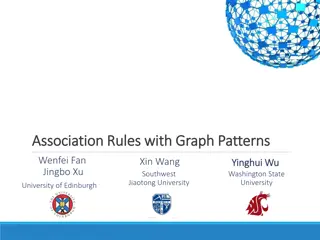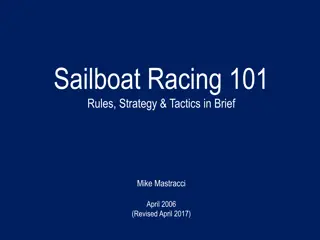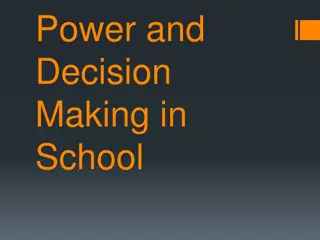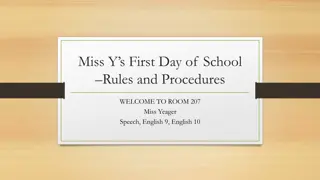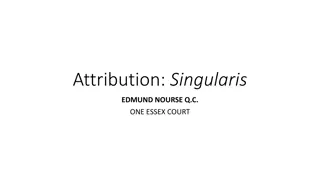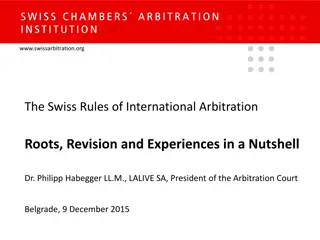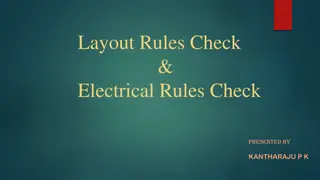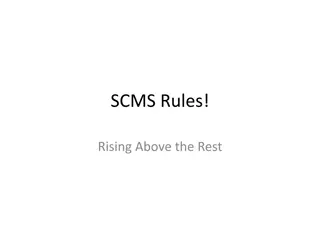
Guide to Scoring and Rules in Judo Tachi-waza
Learn about scoring criteria in Judo Tachi-waza including Ippon, Waza-ari, Yuko, Osaekomi time, and rules on techniques like Bear hug, Reverse Seoi-nage, and Tori using the head. Get insights into how points are awarded and the penalties involved in different scenarios.
Download Presentation

Please find below an Image/Link to download the presentation.
The content on the website is provided AS IS for your information and personal use only. It may not be sold, licensed, or shared on other websites without obtaining consent from the author. If you encounter any issues during the download, it is possible that the publisher has removed the file from their server.
You are allowed to download the files provided on this website for personal or commercial use, subject to the condition that they are used lawfully. All files are the property of their respective owners.
The content on the website is provided AS IS for your information and personal use only. It may not be sold, licensed, or shared on other websites without obtaining consent from the author.
E N D
Presentation Transcript
08:30 Opening 09:00 10:30 Seminar 10:30 11:00 Coffee break 11:00 12:00 Seminar 15:00 16:30 Seminar 16:30 17:00 Coffee break 17:00 18:00 Seminar
Scores in Tachi-waza Ippon Waza-ari & Waza-ari-awasete-ippon Yuko scores are counted (1, 2, 3, etc.) but they do not add up to Waza-ari
Scores in Tachi-waza Ippon: unchanged Waza-ari: landing more than 90 degrees of the shoulder axis, but not on the back
Scores in Tachi-waza Yuko in Tachi-waza is defined as: - Side landing (90 degrees) or close to side landing - Landing on upper back - Landing on the the side on the shoulder axis and on elbow - Landing on buttocks (Yuko and no Shido)
Scores in Tachi-waza Yuko will not be awarded, even if the shoulder axis is 90 degrees or close to 90 degrees, if: - the front part of the stomach, - the front part of the hip or - the knee to the front are touching the mat.
Osaekomi time Ippon: 20 sec Waza-ari: 10 sec or more, but less than 20 sec (10-19 sec) Yuko: 5 sec or more, but less than 10 sec (5-9 sec)
Bear hug Bear hug in tachi-waza is allowed, excepted with hands or hands and arms clasped, forming a circle which will be penalised with Shido.
Reverse Seoi-nage Reverse Seoi-nage at senior and junior events is allowed . Reverse Seoi-nage at cadet events will be penalised with Shido
Tori using the head In senior and junior events Tori is allowed to use the head to throw. In cadet events athletes are not allowed to use the head to throw as Tori, they will be penalised with Shido.
Uke applying head defence In senior and junior events Uke is allowed to use the head to defend. In cadet events athletes are not allowed to use the head to defend as Uke. In this situation, Tori will be awarded a score, if any, and Uke will be penalised with Shido. Note: Landing on bridge will still be considered Ippon!`
Diving To dive headfirst onto the tatami, be bending forward and downward while performing or attempting to perform techniques such as Uchi-mata, Harai-goshi, Seoi-nage, Tai- otoshi, Kata-guruma, Tsuri-goshi, Ura-nage etc. it is forbidden to somersault forward when Uke is on the shoulders or the back of tori, and will be penalised with Hansokumake.
Gripping under the belt All jacket grips and gripping under the belt to the level of the top the inner thigh are allowed but if using negatively jacket and under the belt to the level of the top of the inner tights, Shido will be given.
Gripping under the belt Hooking the legs with the hand or arm, leg grabbing, gripping trousers and touching the leg from the top of inner thigh down is forbidden and will be penalised with Shido.
Grips inside jacket and trousers In Tachi-waza it is allowed to grip inside the sleeve as Tori and as Uke. In Tachi-waza it is not allowed to grip inside the trousers (down) as Tori and as Uke, and will be penalised with Shido. In Ne-waza it is allowed to grip inside the sleeve as Tori and as Uke. In Ne-waza it is allowed the grip inside the trouser as Tori and as Uke.
Kansetsu-waza & Shime-waza Applying Kansetsu-waza or Shime-waza in Tachi-waza without a judo throwing technique, or with a judo throwing technique with a lower risk of injury, where Uke has the possibility to escape, performed with one or two hands on one arm will be penalised with Shido.
Kansetsu-waza & Shime-waza Applying Kansetsu-waza or Shime-waza in Tachi- waza with a judo throwing technique with a higher risk of injury, where Uke has no possibility to escape, performed with one or two hands on one arm will be penalised with Hansokumake.
False attack False attack is considered when: - Tori has no intention to throw. - Tori attacks without kumikata or immediately release the kumikata. - Tor makes a single fake attack or several repeated fake attacks with no breaking of Uke s balance. - Tori puts a leg in between ukes legs to block the possibility of an attack. - Tori has no realistic possibility to throw (new).
Stepping outside contest area In Tachi-waza to go intentionally outside the contest area will be penalised with Shido. In Ne-waza to go intentionally outside the contest area will be penalised with Shido.
Kumikata The time between conventional kumikata (classic Hikite and Tsurite)` and making an attack is 30 seconds if there is a positive progression.
Osaekomi A throwing score will be awarded if there is a Kodokan classified throwing technique or variation of it, with continuity and valid landing. An Osaekomi! will be called if there is a Kodokan classified Osaekomi-waza technique or a variation of it, fixing and control.
Shido in Cadet Competitions - In cadet events athletes are not allowed to use the head to throw as Tori, they will be penalised with Shido. - In cadet events athletes are not allowed to use the head to defend as Uke. In this situation, Tori will be awarded a score, if any, and Uke will be penalised with Shido. - In cadet events there will be no score for reverse Seoi- nage, but penalised with Shido.
Techniques allowed - There are Kodokan classified judo techniques allowed for all age groups. - There are Kodokan classified techniques partial allowed (Tachi-waza vs Ne-waza; senior/junior vs cadet events) - There are Kodokan classified judo techniques are not allowed (Kawazu-gake, Kani-Basami, Do-jime, Ashi-garami).
Thank you Merci Muchas gracias



